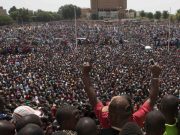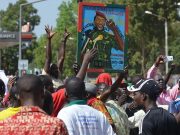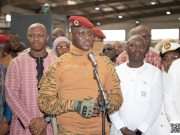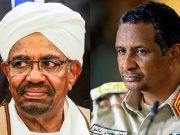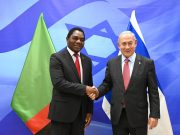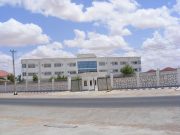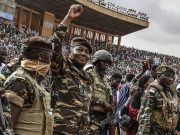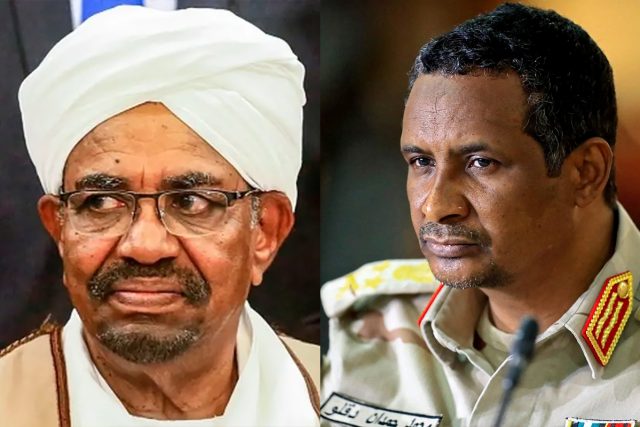In the last days of October 2025, the city of El Fashir in North Darfur erupted into horror. More than 2000 civilians were executed after the Rapid Support Forces (RSF) seized control of the city following an eighteen-month siege. Survivors recount door-to-door raids, summary executions in hospitals, and women and children targeted in an ethnic cleansing campaign. The massacre was not an isolated atrocity. It was the inevitable outcome of a decades-long experiment in militarized politics. It was the ghost of Omar al-Bashir’s past returning to haunt Sudan.
This massacre was the predictable culmination of a strategy that began under former President Omar al-Bashir, who deliberately built and empowered a paramilitary machine that has now turned its guns on Sudanese civilians. The RSF did not arise by accident. It was engineered by Bashir himself in 2013 as part of his effort to fortify his regime. That decision planted the seeds of Sudan’s current tragedy.
From Janjaweed proxies to the RSF: The creation of a monster
When rebellion broke out in Darfur in 2003, Bashir’s government armed and mobilized tribal Arab militias known as the Janjaweed to crush it. The regime gave them guns, vehicles, and impunity. These militias executed a scorched-earth campaign against non-Arab ethnic groups in Darfur, killing tens of thousands and displacing millions. Bashir was later indicted by the International Criminal Court for crimes against humanity and genocide in connection with these atrocities.
By 2013, Bashir was facing renewed rebellions and internal discontent. He decided to formalize and expand the Janjaweed under a new banner. The Rapid Support Forces were born, with Mohamed Hamdan Dagalo, known as Hemedti, as their commander. A former Janjaweed leader and camel trader from Darfur, Hemedti became the new face of Bashir’s counter-insurgency. The RSF was created not as a regular army, but as a paramilitary loyal to Bashir personally. It was designed to be a weapon that operated outside conventional military hierarchy, capable of crushing dissent and projecting fear.
Bashir gave Hemedti money, weapons, and legal status. In return, the RSF did the regime’s dirty work. They fought rebels in Darfur and other regions, burned villages, looted markets, and carried out mass rapes. Bashir’s government justified these operations as national security measures, but the reality was a campaign of terror. The RSF became the most feared force in Sudan, answering directly to the presidency.
The RSF unleashed and empowered
By the mid-2010s, the RSF had grown into a vast security and business empire. Bashir granted Hemedti control over gold-rich regions of Darfur, allowing him to build a personal fortune. The RSF exported gold, ran smuggling networks, and received payments from foreign governments for deploying troops abroad, such as in Yemen. The force’s power was rooted as much in money as in guns.
In 2017, Bashir signed a law recognizing the RSF as an independent security organ. This gave Hemedti and his men unprecedented autonomy. The RSF was technically part of Sudan’s armed forces, but in practice it operated as a parallel army with its own command structure. Bashir had created a monster that combined the brutality of militias with the privileges of the state.
Bashir’s reasoning was political as well as military. He wanted a loyal force to balance the regular army and the intelligence services. By dividing the instruments of violence, he believed he could prevent a coup. What he achieved instead was fragmentation. The RSF became both protector and potential threat. It owed its existence to Bashir but was loyal only to its own interests.
The master plan unravels
When protests erupted across Sudan in December 2018, calling for Bashir’s resignation, the RSF was one of the forces deployed to suppress them. Protesters were shot and beaten. Yet as the demonstrations grew, Bashir’s carefully constructed security architecture began to crumble. The very forces he had created to guarantee his rule joined the conspiracy to remove him.
In April 2019, Bashir was overthrown by his generals. Among them was Hemedti, whose RSF became a decisive actor in the post-Bashir order. He was appointed deputy head of the Transitional Military Council. For a brief moment, Hemedti appeared to be the kingmaker of Sudan. He had gone from being Bashir’s enforcer to one of the most powerful men in the country.
Bashir’s strategy of empowering militias had collapsed. The RSF, once his tool, was now a rival to the army. It possessed its own weapons, money, and foreign alliances. What began as a counter-insurgency force had become a state within a state.
From protector to predator
The uneasy alliance between the RSF and the regular army broke down completely in April 2023. Fighting erupted in Khartoum and quickly spread to Darfur. The RSF, under Hemedti, sought to seize power outright. The Sudanese Armed Forces fought back. Cities were bombed, civilians massacred, and the country descended into civil war.
Darfur, where the RSF’s roots lie, became the epicenter of their brutality. In El Fashir, the capital of North Darfur, the RSF imposed an eighteen-month siege. They blocked humanitarian aid, cut off food and water, and surrounded hospitals. When they finally captured the city in October 2025, they turned their guns on civilians. Thousands were executed. Entire families were wiped out. Hospitals became killing grounds. Satellite images revealed mass graves. Witnesses described bodies rotting in the streets and neighborhoods reduced to ash.
The world watched in horror, but the massacre was the logical outcome of the system Bashir had built. He had institutionalized violence, legitimized impunity, and given men like Hemedti both the power and the precedent to rule through fear.
Bashir’s legacy: building the machinery of massacre
The connection between Bashir’s decisions and the massacre in El Fashir is direct and undeniable. In 2013, he transformed tribal militias into a national paramilitary. In 2017, he gave that paramilitary legal recognition and independence. He armed it, financed it, and made it part of Sudan’s political economy. When he fell, the RSF did not dissolve. It simply adapted and expanded. The same force that once fought for Bashir now fights for its own survival and dominance.
Bashir’s attempt to create a parallel army was not new in Africa. Leaders from Liberia to Congo have tried to protect their regimes through private militias. What makes Bashir’s case exceptional is how far he institutionalized it. He turned the logic of militias into state policy. The RSF was not an aberration in his system; it was the system.
The consequences for Sudan and Africa
The massacre in El Fashir is a moral and political reckoning. It reveals how quickly a state collapses when its rulers substitute loyalty for professionalism and impunity for justice. Sudan’s tragedy is that it built its national security on the foundations of fear. The RSF was born to serve power, not protect people. Today, it stands as proof that the tools of tyranny cannot create peace.
Across Africa, the lesson is stark. Building power through militias may offer short-term control, but it guarantees long-term chaos. Once violence is legitimized as a political tool, it cannot easily be contained. The RSF’s crimes are the echo of Bashir’s choices, and El Fashir is the battlefield where his legacy reached its full, monstrous form.
A reckoning overdue
Omar al-Bashir is no longer in office, but the shadow of his rule still stretches across Sudan. The RSF he created has destroyed entire communities and split the nation. The world’s indifference to his earlier crimes allowed this one to unfold. Accountability cannot end with his downfall. It must extend to the structure he built and the men who continue to use it to kill.
The massacre in El Fashir is not only a humanitarian catastrophe. It is a warning to every nation that flirts with the idea of arming loyalty instead of building justice. It shows that state-sponsored violence does not die with its creator. It mutates, survives, and eventually consumes the state itself.
Omar al-Bashir thought he could control fire by keeping it close. Instead, he fed it until it burned everything around him. El Fashir is the final blaze from the fire he lit twelve years ago—a fire born in Darfur, nurtured by ambition, and sustained by impunity. It is the last chapter of Bashir’s long betrayal of Sudan.



